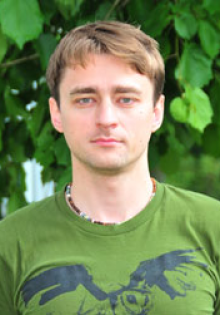Numerical Simulations with the Discontinuous Galerkin Time Domain Method (L.048.24018 and L.048.92036), summer semester 2022
This is a new course for students of the Elektrotechnik master, Electrical System Engineering master and related programs at the University Paderborn. It considers a modern efficient approach for numerical modelling and solving partial differential equations.
Topics
These topics are covered:
- Introduction to the modelling process.
- Basic elements of the Discontinuous Galerkin Method Time Domain in one dimension.
- Theory foundation and discrete stability.
- 3D implementation of a DGTD Maxwell equation solver.
- Aspects of unstructured mesh generation.
- Application of the DGTD in the computational electromagnetism.
- Nonlinear problems.
As prerequisites we expect Bachelor level knowledge in mathematics and basic programming abilities in C/C++ or Matlab.
Lecture
The lectures will be given as recorded videos and are published in PANDA
Lecturer: Dr. Y. Grynko
Exercise groups (Tutorials)
The exercises will take place in the pool rooms.
At the beginning of the course each student starts his own project which includes computer implementation of the DGTD method and develops it over the semester. During the exercises problems and achievements will be discussed.
Computer pool rooms
The Electrical Engineering department operates two computer pools in room P7.2.02.1 and room P1.6.12.4, see detailed information in German. Room P7.2.02.1 will be used for the exercise groups. With an access card available from the IRB (room E1.129) you can enter the rooms anytime unless they are reserved for teaching.
To use the computers in the pool rooms with your IMT account, you have to request access in the IMT User Administration interface. There click on "english" (in the upper right corner), then "User Self-Administration", enter your IMT name/password, click on the "Decentralized Services" button, scroll down to section "Fakultät 5 (EIM)" line "Rechnerzugang im Institut für Informatik" and click on the "details / change" button there. Click the button "Beantragen", then click "back" (NOT "stornieren"=cancel). If you are a regular ESE student it should be automatically activated; if not, please go to the IRB (room E1.129) to activate it.
The computers run on Windows (see web for introductions if you are not familiar) and have Matlab installed (classroom license with small limitations).
Exam
Oral exam is scheduled in the end of the course.
Communication
For office hours and contact data please have a look at the website of the TET group.
Current information and circular mails are published via PAUL.
We are always thankful for suggestions regarding the course.
Literature
- J. S. Hesthaven, and T. Warburton, "Nodal Discontinuous Galerkin Methods: Algorith, Analysis and Applications," Springer Texts in Applied Mathematics 54. Springer Verlag, New York, 2008.
- www.nudg.org
- K. Busch, M. König,and J. Niegemann, "Discontinuous Galerkin methods in nanophotonics, Laser and Photonics Reviews," 5, p. 773-809 (2011).
- J. S. Hesthaven, and T. Warburton, "Nodal High-Order Methods on Unstructured Grids: I. Time-Domain Solution of Maxwell's Equations," Journal of Computational Physics, 181, p. 186-221 (2002).
- http://tetgen.org/
Additional literature will be mentioned in the lectures.

